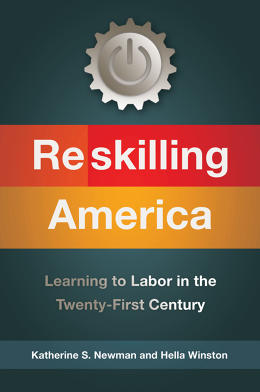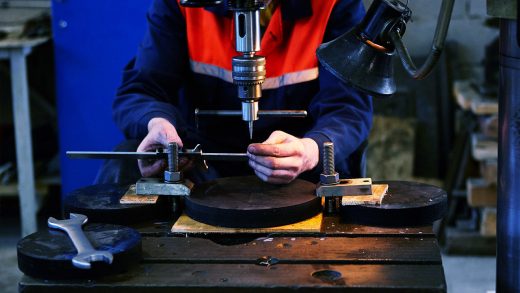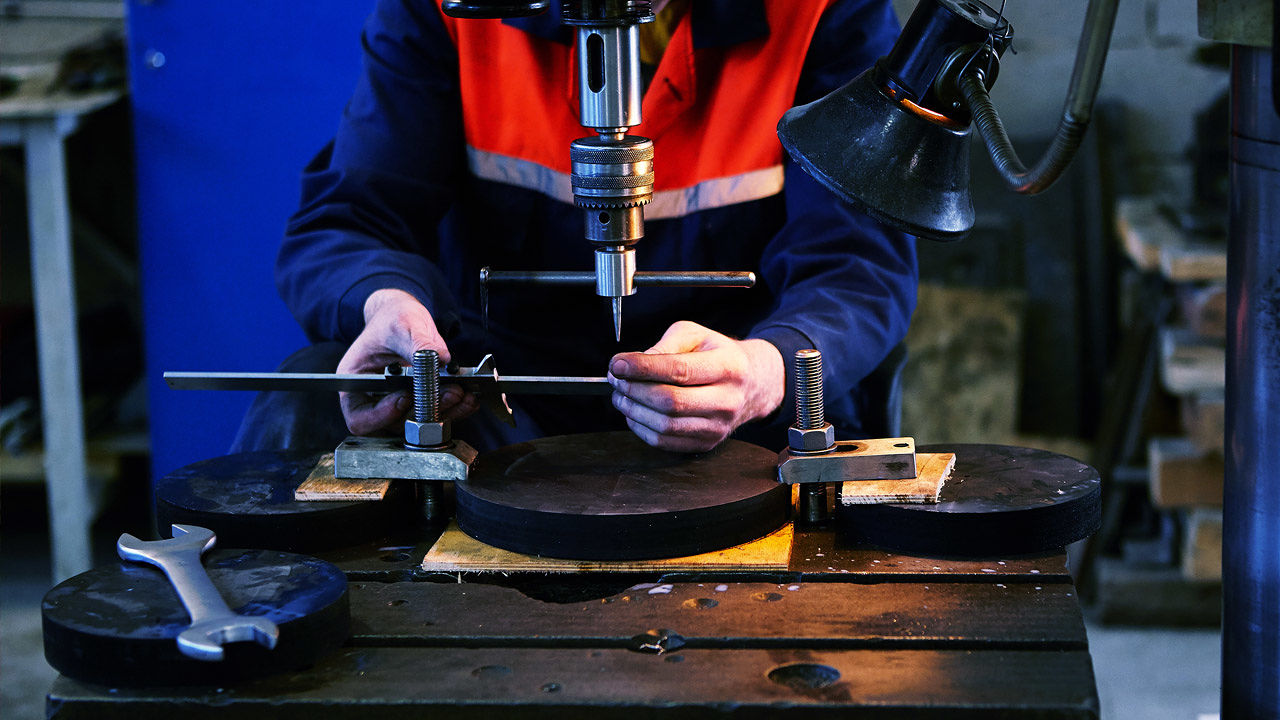What The U.S. Can Learn From The Way Germany Trains Its Workforce
At 18, Johan, a German teen working as an apprentice in the Georgsmarien Huette steel mill in western Germany, is earning about $1,200 a month. For every 12 months he serves as an apprentice, he qualifies for a bonus of one month’s pay. Better still, when Johan finishes training, he’ll have a job waiting for him that will pay three times this wage.
Johan has had two years of classroom experience with precision lathes, electronics, and graphing calculators. He’s trained for three years on the shop floor under an experienced meister who will see him through a demanding series of national examinations. Only if he passes these grueling tests will he be certified to keep the kind of job he has trained for.
Johan’s experience is not unique in Germany, but it’s pretty much unheard of in the United States. This year, while presidential candidates make stump speeches and offer proposals about how to create jobs and remake the American educational system for the 21st-century economy, we aren’t likely to hear much that resembles the German system. But there are a few important lessons it can teach us.
The German System’s Advantages, Inside Germany And Out
55% of German youth participate in the “dual education system.” The investment Germans have made in it is responsible, in large measure, for the extraordinarily high level of skill in the country’s industrial labor force. But manufacturing isn’t the only beneficiary. Some 350 occupations—from office management clerks to electricians to mortuary scientists—are represented in the dual education system, and young people who train for them must complete national examinations in each one, exams that have been crafted collaboratively by employers, employees, and teachers from vocational schools.
The dual education system also contributes to the low levels of youth unemployment in Germany relative to other advanced economies. And while it’s hardly the only factor, the combination of vocational education and apprenticeships ensures the country a steady supply of superbly trained workers—which is one reason why German industries have dominated the development of the Chinese infrastructure, for instance.

German subsidiaries in the U.S. are trying to mimic the technical training they’re accustomed to back home. MTU, whose parent company is in Friedrichasfen, Germany, is just one example. A subsidiary of Rolls-Royce Power Systems, the company manufactures diesel engines in Aiken, South Carolina. In March 2010, MTU took in over 600 applications for the available line jobs. It interviewed 250 people and picked 60—mainly experienced mechanics who’d previously worked in the area’s auto body shops, car dealerships, and Jiffy Lube stations. But after that initial wave of hiring, the company came to the conclusion it had tapped out all of the labor that was skilled enough to meet its requirements.
In Germany, by contrast, MTU would’ve had a long line of apprentices to fill additional jobs. But in Aiken, it had nothing. So the company decided to start an apprenticeship program, modeled directly on the dual program in Germany. Twelve students from five of the high schools that feed into a regional Tech Center compete for six slots every year.
First, they take an online math course; MTU tests them to find the best applicants. Among other things, candidates need to be able to work within the European metric system and read blueprints from the parent facility in Germany. Although the program is small in size, MTU’s approach is being duplicated by many other German companies, and that’s helping to lead a manufacturing revival that is putting workers back on the job in South Carolina, North Carolina, Tennessee, and Texas.
How The U.S. Gave Up On Vocational Training
Along with American rust belt inner cities, these southern regions are looking to develop a new competitive edge. Here in the U.S., the national unemployment rate has come down, but the Great Recession still casts a shadow over America’s young people. The youth unemployment rate in January was 10.3%, more than twice the national rate for all prime-age workers. Inner-city neighborhoods are in far worse shape. In Chicago, 59.2% of African-Americans and 37% of Latinos ages 20–24 were out of work in 2014. In Michigan, the 2015 youth-unemployment rate was nearly 60%, with Detroit the center of that epidemic.
Meanwhile, so-called “middle skill” jobs—those that demand technical qualifications but not necessarily a four-year college degree—are going begging. By 2017, 2.5 million jobs of this kind will be added to the workforce nationwide, accounting for nearly 40% of all job growth. In New York State alone, close to 25% of these middle-skill jobs go unfilled.
Can we move in the direction of high-quality “career and technical education?” Our history is filled with sterling examples. Aviation High School in New York was born in 1936 and it is still there today. It fueled American dominance of the aviation industry. Automotive High School helped to build the car industry in Detroit. But these two schools are among the last survivors of what was once a major investment in American vocational education.
We gave most of it up. Other countries didn’t. And now they dominate advanced manufacturing and other tech fields, in part because their skilled labor forces are the envy of the world. While many American educators worry that this path would consign industry-bound youth to a life as second-class citizens, the truth is that American students who attend vocational school find a focus that is hard to acquire in a general high school.
And the alternatives offered by the public educational system, at least in practice, have in recent decades failed to deliver on the promise of upward mobility for more and more students. Ideally, rigorous technical high schools, on the other hand, can better prepare students to move into higher education if that’s what they desire in later years, simply because the high school experience offers a comparatively stronger foundation.
Small Signs Of Progress
The U.S. Department of Labor’s Apprenticeship USA program lets employers compete for $175 million to develop registered apprenticeship programs like the one at MTU. This is a drop in a very big bucket. Fewer than 5% of American youth are training as apprentices, and most of them are in the construction trades.
We need to expand our investment, increase state tax credits to encourage firms to get with this program, and diversify its reach to include advanced manufacturing, information technology, and health care. We must encourage high schools, community colleges, and regional technical colleges to recruit teachers with industry experience, people who can import the hiring networks they’ve built through their work experience, and swing into gear in order to place their high-performing students.
In areas like Aiken that were once textile centers but have since lost their employment base, the U.S. version of the German system is making a difference. It’s starting to provide American students (usually in their 20s) with the skills they need to compete and jobs that pay them well. From advanced manufacturing to health service management and registered nursing, from plumbing, pipe-, or steam-fitting to laboratory tech jobs, specialized skills can secure a young person’s livelihood in ways many of the available alternatives can’t.
The median salaries for those roles range from $55,000 to $80,000—and that’s not just a living, it’s a route into the middle class that hasn’t been open for at least a generation.
This article is adapted from Reskilling America: Learning to Labor in the Twenty-First Century by Katherine S. Newman and Hella Winston, published by Metropolitan Books, an imprint of Henry Holt and Company, LLC. Copyright © 2016 by Katherine S. Newman and Hella Winston. All rights reserved. It is reprinted with permission.
Fast Company , Read Full Story
(19)







